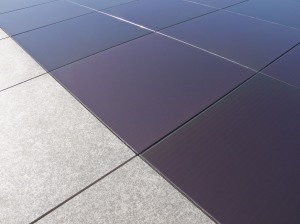Governor Jennifer M. Granholm today announced that the state of Michigan has formed a partnership with the government of Navarra, Spain to develop green technology.
Navarra is a European center of the renewable-energy sector in Europe.
Michigan will work collaboratively with leading industry experts, including the Michigan-based wind turbine manufacturer Energetx Composites.
“This partnership will further our efforts to make Michigan the North American hub of clean energy innovation,” Granholm said. “We are taking bold and decisive steps to ensure we are the state that develops the technologies, manufactures the products and creates the green jobs that will help reduce our nation’s dependence on foreign oil.”
The memorandum of understanding with the government of Navarra was finalized today in Dallas, Texas.
The agreement consists of joint activities – including policy sharing, technology transfer, value-chain mapping and trade missions – in the targeted sectors of wind technology, biomass, solar energy, smart-grid technology and bio-climactic research.
Last month, the Michigan Strategic Fund board approved a Centers of Energy Excellence designation and $3.5 million in funding for Energetx Composites, the spin-off of S2 Yachts located in Holland, which will collaborate with Oak Ridge National Laboratory (ORNL) and the Dow Chemical Company to manufacture wind turbine blades with advanced materials.
Dow and ORNL will deliver innovative materials and technical expertise to Energetx, and the University of Michigan and Kettering University will contribute workforce training.
The project will receive $3.5 million in matching funds from the U.S. Department of Energy. CENER, the national renewable energy center located in the Navarra region, will work with Energetx to test wind turbine blades at a laboratory in Sanguesa, Spain.
Navarra shares a similar industrial background with Michigan, as it was a center of manufacturing focused on transportation and heavy engines. Early last decade, Navarra identified the need to diversify and chose to focus on clean energy.
CENER has played a significant role in the development of renewable energy, both in Navarra and Spain,” said Director of Enterprise of Government of Navarra Begoña Urien.
Over the past eight years, CENER has grown to become a leader in renewable-energy technology.
Navarra, pioneer of renewable energy sources, currently produces approximately 65 percent of its electricity from renewable-energy sources, ranking it ahead of the United Kingdom, Sweden and France.
 This cutting edge system, which is still in an early development stage by Onyx and Butech engineers, is made by a solar PV glass integrated over elevated ceramic and it´s completely walkable. One of its main atractives is the versatility and the fact that it is posible to place furnishing on it without losing space.
This cutting edge system, which is still in an early development stage by Onyx and Butech engineers, is made by a solar PV glass integrated over elevated ceramic and it´s completely walkable. One of its main atractives is the versatility and the fact that it is posible to place furnishing on it without losing space. Capabilities for both multi- and monocrystalline silicon-based modules will be in place at the facility, with the cells being supplied by Suniva in the U.S., he said. Initially, 60- and 72-cell modules, with power outputs up to 300W, will come off the production line.
Capabilities for both multi- and monocrystalline silicon-based modules will be in place at the facility, with the cells being supplied by Suniva in the U.S., he said. Initially, 60- and 72-cell modules, with power outputs up to 300W, will come off the production line. According to Soltec, the main features of these modules are high efficiency, wide acceptance angle, compact size, cost effectiveness and high reliability.
According to Soltec, the main features of these modules are high efficiency, wide acceptance angle, compact size, cost effectiveness and high reliability.
